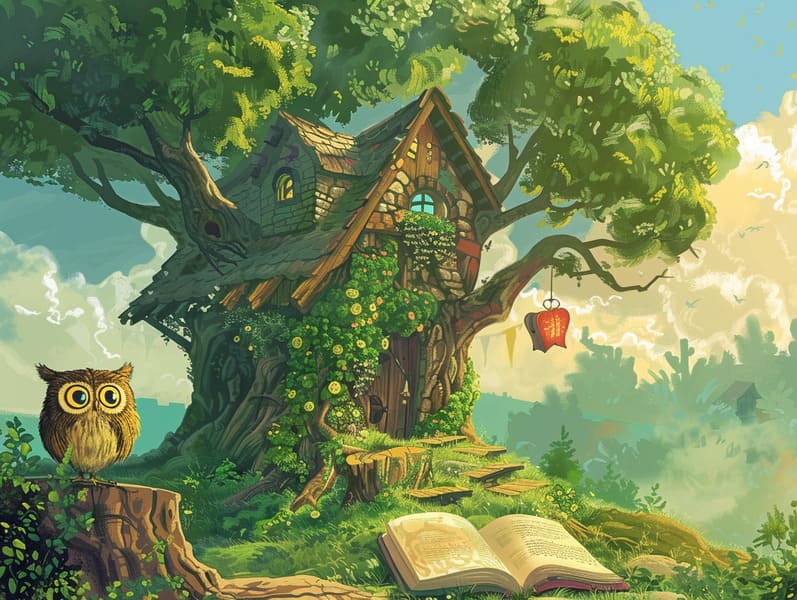The Rise of Grimm's Fairy Tales and the Perpetual Grace.
The Rise of Grimm's Fairy Tales and the Perpetual Grace.
Blog Article

Old fairy tales have historical significance. These stories have been whispered from one generation to the next far before they were ever transcribed. They developed from a variety of civilizations, including American traditions. They were initially shared among older generations, often carrying themes and messages mirroring the societal norms and beliefs of the time.
The renowned Brothers Grimm, the two Grimm brothers, were among the first to compile and release many of these beloved fairy tales. Their collection, "Grimm's Fairy Tales," included classics like "The Little Glass Slipper," "Hansel and Gretel," and "Little Snow White," which have since become essentials in the world of children's fairy tales. Similarly, Hans Andersen's delightful stories, such as "The Mermaid's Tale," and "The Duckling's Story," have stolen hearts worldwide, guaranteeing their place in the pantheon of famous fairy tales.
Though they are old, these tales remain as important as ever, especially as children's night stories. These fantastical tales are now available in diverse formats, including gorgeously illustrated books, captivating animations, and digital storybooks.
Their continued relevance can be connected to several magical reasons:
Ethical Lessons: Classic fairy tales often teach important moral lessons. Narratives like "The Wolf and the Liar" teach the merit of truthfulness, while "The Race of the Tortoise and the Hare" emphasize the qualities of persistence and humbleness. These tales offer children clear distinctions between moral and immoral, forming their moral compass in a subtle yet significant way.
Sympathy and Perception: Timeless fairy tales frequently depict protagonists facing trials and tribulations, prompting young listeners to feel with their struggles and rally behind their triumphs. For instance, "Beauty and Her Beast" teaches us the value of seeing beyond the surface to know the true being of a individual, fostering awareness and recognition.
Cultural Knowledge: Many timeless fairy tales are saturated in the cultural contexts from which they bloomed. Learning from these tales can provide intriguing perspectives into different ways of life, nurturing a sense of world respect and recognition.
Imagination and Innovation: The imaginative elements in old fairy tales—enchanted objects—inspire children’s fantastical thinking. These tales take readers to otherworldly realms, unleashing inventive ideas and a sense of curiosity that lasts a lifetime.
Ancient fairy tales are not only magical but also edifying. They act as entrancing tools in building various thinking and feeling skills in young ones. When ancient fairy tales are read aloud, they promote language development by bringing new language and intricate sentence structures. This practice also promotes listening abilities and attention span, as little ones follow the story, expectant to see what happens next.
Furthermore, discussing the themes and characters of old fairy tales can develop thinking skills and reasoning skills. Kids are taught to notice patterns, predict happenings, and catch on to cause and effect. These reflections also help little ones say their thoughts and feelings, advancing their emotional intelligence.
In today’s information age, the prevalence of digital storybooks has made these narratives more within reach than ever. Online resources and apps make available wide arrays of traditional fairy tales that can be perused or listened to anytime, anywhere. Fairy tales voiced are particularly common, supplying an delightful method for little ones to appreciate these captivating stories. Sound books and narrated videos bring characters and settings to life, often enhanced by magical music and soundtracks that intensify the narrative adventure.
The enduring charm of ancient fairy tales lies in their ability to change to contemporary times while keeping their main lessons. Contemporary retellings of these fairy tales often bring in more different characters and modern settings, making them accessible to today’s audience. However, the key lessons of daring, warmth, and integrity remain unchanged, continuing to touch audiences of all ages.
Classic fairy tales also offer a sense of comfort and homeliness. They present a structured narrative with a clear beginning, middle, and end, often ending with the conclusion of conflicts and the triumph of rightness over wrongness. This certainty can be calming for young readers, presenting a sense of unwaveringness in an fluid world.
Ancient fairy tales continue to charm and teach new generations, maintaining their elegance and relevance in modern society. As children's night stories, they give a perfect blend of delight and instruction, enhancing moral values, empathy, and creativity. The existence of web-based fairy tales and the well-liked nature of fairy tales read click here out loud promise that these old fairy tales remain obtainable to new generations.
By safeguarding and spreading these narratives, we continue to value the rich tapestry of tradition and cultural heritage. Whether you are perusing a artistically illustrated book, discovering a web-based collection, or listening through an voice book, the mystique of famous fairy tales is always within reach. These narratives emphasize of the unending impact of narratives and its ability to bring us together across epochs and places.
If you are discovering a gorgeously illustrated book, seeing a cyber collection, or listening via an voice book, the fascination of timeless fairy tales is always within reach.
These stories point out of the unending influence of fairy tales and its ability to hold us together across time and space, creating a bond that delights and instructs alike.